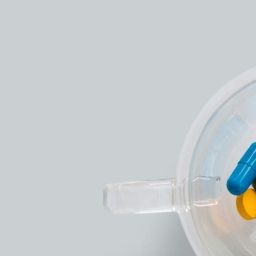When you gain weight over a long period of time, your skin expands around your growing body. After weight loss surgery, you may lose in excess of 40 to 70 kilograms. As a result, your skin usually doesn’t have enough elasticity to recover from the prolonged extensive stretching. This may leave you with excess, sagging skin and residual fat. This excess skin often results in more than just cosmetic issues. It can prevent you from fully enjoying your healthier life.
It may result in:
- Postural problems
- Chafing, and rashes, especially when it rubs against other folds of skin or when it stays moist Infections, as loose skin creates folds that are harder to clean, and chafing causes breaks in your skin, paving the way for infections
- Unpleasant body odour due to moisture trapped in skin folds
- Body-confidence issues due to embarrassing or uncomfortable folds of redundant skin
There are many ways to reduce the amount of loose skin you may develop after surgery including:
- Balanced diet with plenty of protein and vitamins
- Exercise
- Cosmetic surgery (if none of the above are enough)
A balanced diet:
Eating sufficient protein may help you build and maintain lean muscle. It may also help to improve your skin elasticity, so it can fit more tightly to your new frame. After bariatric surgery, it’s important to eat at least 60 – 100 mg of protein a day. Taking your prescribed multivitamins may also preserve some skin elasticity after weight loss surgery. Vitamins C, A, E, K, and B-complex vitamins, as well as trace minerals such as zinc, are all important for skin health.
Exercise:
Exercise can limit the amount of loose skin you may develop after bariatric surgery. When you prevent the loss of lean muscle mass, you reduce the looseness of your skin. When you gain muscle, you actually fill out your skin more.
POST WEIGHT LOSS SURGERY OPTIONS
Doing all of the above will help, but the fact is that after losing 40 to 60 kilograms, it is realistic to expect that you will still have some excess skin. There is a range of surgical procedures that for the treatment of excess skin in the most commonly affected areas, which include the upper arms, back, breasts, abdomen and thighs. Together these excess skin and fat reduction surgeries are often known as body contouring surgery. They are only recommended after 18 months once your weight has plateaued.
ABDOMINOPLASTY
After weight loss surgery many patients will require removal of excess skin, especially in the abdominal area. The common term “tummy tuck” is technically known as abdominoplasty. In an abdominoplasty of the skin between the pubic hair line and the belly button being removed as an ellipse to improve the appearance, shape and profile of your abdominal area.
- Surgery usually takes approximately two hours
- Up to 10 kilograms or more of excess skin and tissue may be removed
- Average 2-3 days in hospital
- Patients frequently go home with drains.
- It can usually take up to 2 weeks to resume light work and 3-4 weeks to return to more physical activities like exercise
- Your scar may take up to a year or more to mature
- You may see dramatic changes your body contour, mobility, and clothing fit
Abdominoplasty is best done when weight loss has been stable for 12 months.
THIGHPLASTY OR THIGH LIFT SURGERY
Thighplasty is a surgical procedure to remove excess skin and fat from the inner or outer thighs after excessive weight loss. It removes lax skin and fat and places the scars in the inner thigh area where it can be hidden.
- Excess skin is removed from the inner aspect of the thigh using incisions around the groin, upper leg and hip
- Liposculpture is often used in combination with Thighplasty
- One to two days in hospital
- Most patients return to work within one to two weeks
- Support garment is usually needed for 2-3 months
- Restricted activity for a few weeks
BRACHIOPLASTY OR ARM LIFT
This operation is done to tighten the loose skin of your upper arm and involves removing sections of skin from the inner arm.
- The scar usually starts in the armpit and extends down towards the elbow. Most of the time the scars are very fine after surgery, though in some patients they can widen
- Liposuction maybe performed at the same time with this procedure in order to shape your arm correctly
- It is also usually performed on both arms during a single operation. This means recovery time will be shorter than a secondary operation
- Recovery varies between patients, but most will need a few weeks off work and avoid activities that require lots of arm use
- Compression garments are usually worn for up to 12 to 16 weeks, by which time most of the healing has occurred
MASTOPEXY (BREAST LIFT)
Breast lift surgery is performed to elevate and reshape breasts and remove excess, loose skin to remedy droopy or sagging breasts. The result is improved breast shape and tone, consistent with new body contours. This procedure is often coupled with other procedures in order to utilize the same anaesthetic.
- Some incision lines resulting from breast lift are concealed in the natural breast contours; however, others may be visible on the breast surface
- You should allow 10-14 days to recover from the procedure
- Light office duties may be resumed in about 2 weeks for most patients
- Your scar may take up to a year or more to mature
Plastic Surgeons
There are a number of plastic surgeons who offer body contouring in the Otago region.
Links to their web sites can be found below.
Mr Will Mcmillan: www.willmcmillan.co.nz
Mr Patrick Lyall: www.enhanceme.co.nz
Rebecca Ayers: www.rebeccaayers.co.nz


